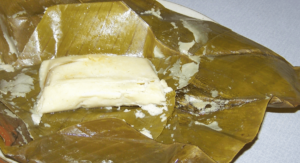Almonds are edible seeds derived from the Prunus dulcis tree, native to the Middle East and South Asia.
They are widely cultivated and prized for their rich nutritional profile, versatility, and unique taste. Almonds come in various forms, including raw, blanched, sliced, chopped, or ground into flour or paste.
Historical Significance in Mexican Cuisine:
Almonds have historical significance in Mexican cuisine, brought to Mexico during the Spanish colonization period. They were embraced and incorporated into Mexican culinary practices, blending with indigenous ingredients to create unique dishes.
Utilization of Almonds in Mexican Cooking:
- Moles and Sauces: Almonds are a fundamental ingredient in various Mexican mole sauces, contributing to their complexity and richness. They are often toasted, ground, or blended into sauces alongside other ingredients like chilies, chocolate, tomatoes, and spices.
- Breads and Pastries: Almonds are used in Mexican baking, particularly in bread, cakes, cookies, and pastries. Whole or sliced almonds are added as toppings or fillings, enhancing both flavor and texture.
- Beverages: Almond-based beverages, such as horchata, are popular in Mexican cuisine. Horchata, a refreshing drink, is made by blending ground almonds (or rice) with water, sweetening agents like sugar or cinnamon, and sometimes combined with rice or seeds.
- Snacks and Desserts: In Mexican cuisine, almonds are used in various desserts, including candies, marzipan, and sweet pastries, showcasing their versatility and appeal in sweet treats.
- Savory Dishes: Almonds may also be included in savory dishes, such as chicken or fish recipes, providing a nutty flavor and crunch to complement the dish’s overall taste.
Almonds, with their diverse applications, have become an integral part of Mexican culinary traditions, offering a range of flavors and textures that enrich the depth and complexity of various dishes, both traditional and contemporary, in the Mexican gastronomic landscape.
Incorporation of Almonds in Mexican Recipes:
Almonds are utilized in various Mexican dishes, contributing to their unique flavors and textures:
- Mole Sauces: Almonds are a key ingredient in several mole sauces, such as Mole Poblano. They are toasted, ground, or blended into the sauce alongside other components like chilies, spices, chocolate, and tomatoes, contributing to the sauce’s richness and complexity.
- Almond Horchata: Horchata, a refreshing beverage in Mexican cuisine, can be made from almonds. Blending ground almonds with water, sweeteners like sugar or cinnamon, and rice or seeds creates a creamy, nutty, and slightly sweet drink known as almond horchata.
- Almond-based Desserts: Almonds are often featured in various Mexican desserts and pastries, such as marzipan, candies, cookies, and cakes. They add a distinct nutty flavor and crunchy texture to these sweet treats.
- Chicken or Meat Dishes: Almonds are occasionally used in savory dishes, particularly with chicken or meats, either in stuffing, sauces, or as a garnish. They contribute a nutty taste and enhance the overall flavor profile of the dish.
- Almond Toppings: Whole or chopped almonds are used as toppings or fillings in bread, sweet bread rolls, or pastries, providing a delightful crunch and nuttiness to these baked goods.
Contribution to Flavor Profile:
- Nutty Taste: Almonds impart a rich, nutty flavor to dishes when toasted or ground, enhancing the overall taste without overpowering other ingredients.
- Textural Element: Almonds contribute a pleasant crunch and texture, whether used whole, sliced, or ground. They add a desirable element of texture to both sweet and savory dishes.
- Versatility: Almonds’ versatility allows them to complement various flavors, whether incorporated into savory mole sauces or sweet pastries, adding depth and complexity to the dish’s taste profile.
- Balanced Sweetness: In desserts, almonds offer a balanced sweetness and nuttiness, making them a sought-after ingredient for creating flavorful and visually appealing treats.
In Mexican cuisine, almonds play a versatile role, offering both flavor enhancement and texture to dishes, from savory sauces like mole to sweet beverages and desserts, showcasing their adaptability and significance in the diverse array of Mexican culinary creations.
Preparation of Almonds for Culinary Use:
- Blanching Almonds: Blanching almonds involves briefly boiling them to remove the skins:
- Bring a pot of water to a boil, then add the almonds and let them boil for 1-2 minutes.
- Drain the almonds and rinse them under cold water. The skins can then be easily removed by gently squeezing each almond.
- Roasting Almonds: To enhance their flavor, roast almonds:
- Preheat the oven to 350°F (175°C).
- Spread raw almonds on a baking sheet in a single layer.
- Roast for 10-15 minutes, shaking the pan occasionally for even roasting, until they turn golden brown and emit a nutty aroma. Keep an eye on them to prevent burning.
- Slicing or Chopping Almonds: Use a sharp knife to slice or chop almonds based on the recipe’s requirements. Sliced almonds are excellent for toppings, while chopped almonds can be incorporated into various dishes.
- Grinding Almonds: To make almond flour or paste:
- Use a food processor or blender to grind blanched or roasted almonds until they reach the desired consistency, whether fine for flour or coarser for almond paste.
Innovative Uses for Almonds in Recipes:
- Almond Crusted Fish or Chicken: Crush roasted almonds and use them as a coating for fish fillets or chicken breasts before baking or frying for a flavorful and crunchy crust.
- Almond Pesto: Create an almond-based pesto by blending roasted almonds with fresh basil, garlic, olive oil, Parmesan cheese, and a squeeze of lemon juice for a unique twist on traditional pesto.
- Almond Dips or Spreads: Blend roasted almonds with ingredients like roasted red peppers, spices, and olive oil to make a delicious almond-based dip or spread for crackers, bread, or vegetable sticks.
- Almond Milk Ice Cream: Use almond milk as a base for homemade ice cream, adding chopped or toasted almonds for texture and flavor.
- Almond-Crusted Vegetable Strips: Coat vegetable strips (like zucchini or eggplant) with ground almonds and bake until crispy for a nutritious and crunchy snack or side dish.
- Almond-Crusted Cheesecake: Press a mixture of crushed almonds and graham cracker crumbs onto the bottom of a cheesecake crust for added texture and flavor.
By experimenting with different preparation methods and incorporating almonds into various recipes, from savory dishes to desserts and snacks, you can explore innovative and creative ways to enjoy the unique taste and texture that almonds bring to culinary creations.
Almonds are edible seeds derived from the Prunus dulcis tree, native to the Middle East and South Asia. They are widely cultivated and prized for their rich nutritional profile, versatility, and unique taste. Almonds come in various forms, including raw, blanched, sliced, chopped, or ground into flour or paste.
Storage and Shelf Life of Almonds:
Proper storage helps maintain the freshness and quality of almonds:
- Room Temperature: Store almonds in an airtight container or resealable bag in a cool, dry place away from sunlight and moisture. When stored properly, unshelled almonds can last for about a year.
- Refrigeration or Freezing: For longer-term storage, particularly in warm climates, refrigerate or freeze almonds. Place them in an airtight container or freezer bag to prevent exposure to moisture or odors. Almonds can maintain quality for up to two years when frozen.
- Check for Freshness: Before consuming almonds, especially if stored for an extended period, check for any signs of spoilage, such as a rancid smell or taste. Discard almonds that appear discolored or have an off odor.
Allergies and Considerations Related to Almonds:
- Allergic Reactions: Almonds are a common allergen, and individuals with allergies to tree nuts may also be allergic to almonds. Allergic reactions can range from mild symptoms like itching or swelling to severe reactions such as anaphylaxis. Individuals with known nut allergies should avoid almonds and almond-derived products.
- Cross-Allergies: People allergic to other tree nuts, such as walnuts or cashews, may have an increased risk of developing an allergy to almonds due to cross-reactivity.
- Oxalates: Almonds contain oxalates, compounds that, in large quantities, can crystallize and cause health issues for individuals prone to kidney stones or certain kidney conditions. Moderation is advisable for those susceptible to oxalate-related problems.
- Phytic Acid: Like other nuts and seeds, almonds contain phytic acid, an antinutrient that may inhibit mineral absorption. Soaking or roasting almonds can reduce phytic acid levels and enhance nutrient absorption.
- Portion Control: Almonds are calorie-dense and high in healthy fats. While nutritious, it’s essential to consume them in moderation, especially for individuals monitoring calorie intake.
As with any food allergen, individuals with known allergies or concerns should seek advice from healthcare professionals or allergists before consuming almonds or almond-based products. Being aware of potential allergic reactions and dietary considerations is crucial for managing allergies and making informed dietary choices.





